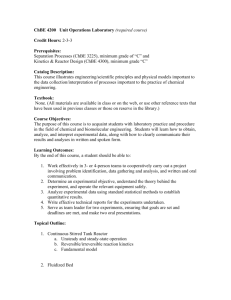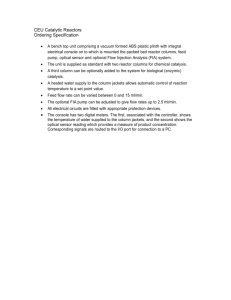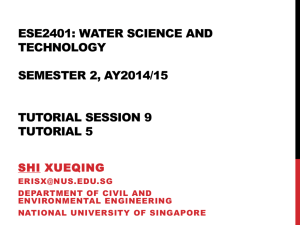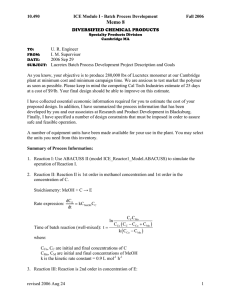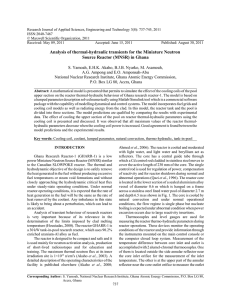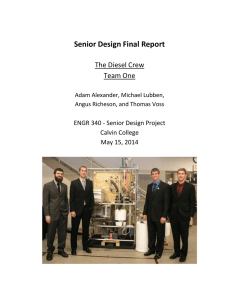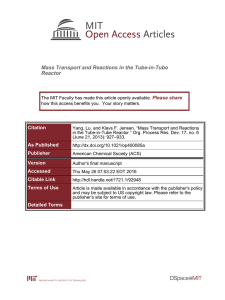Document 11934168
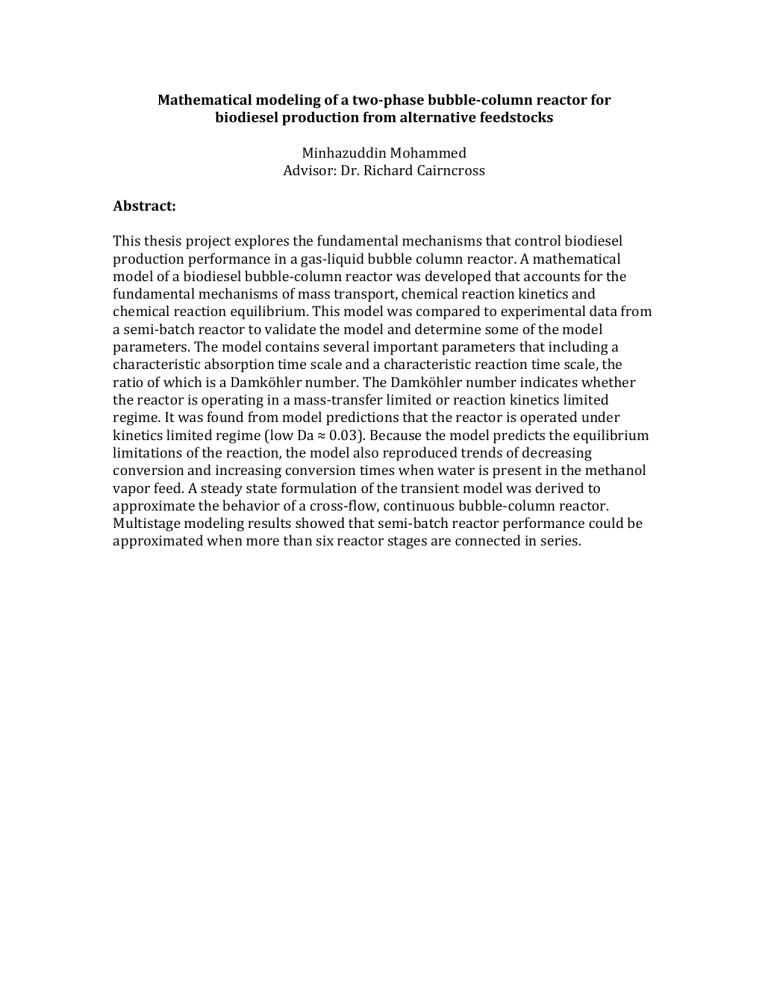
Mathematical modeling of a two-‐phase bubble-‐column reactor for biodiesel production from alternative feedstocks
Minhazuddin Mohammed
Advisor: Dr. Richard Cairncross
Abstract:
This thesis project explores the fundamental mechanisms that control biodiesel production performance in a gas-‐liquid bubble column reactor. A mathematical model of a biodiesel bubble-‐column reactor was developed that accounts for the fundamental mechanisms of mass transport, chemical reaction kinetics and chemical reaction equilibrium. This model was compared to experimental data from a semi-‐batch reactor to validate the model and determine some of the model parameters. The model contains several important parameters that including a characteristic absorption time scale and a characteristic reaction time scale, the ratio of which is a Damköhler number. The Damköhler number indicates whether the reactor is operating in a mass-‐transfer limited or reaction kinetics limited regime. It was found from model predictions that the reactor is operated under kinetics limited regime (low Da ≈ 0.03). Because the model predicts the equilibrium limitations of the reaction, the model also reproduced trends of decreasing conversion and increasing conversion times when water is present in the methanol vapor feed. A steady state formulation of the transient model was derived to approximate the behavior of a cross-‐flow, continuous bubble-‐column reactor.
Multistage modeling results showed that semi-‐batch reactor performance could be approximated when more than six reactor stages are connected in series.


